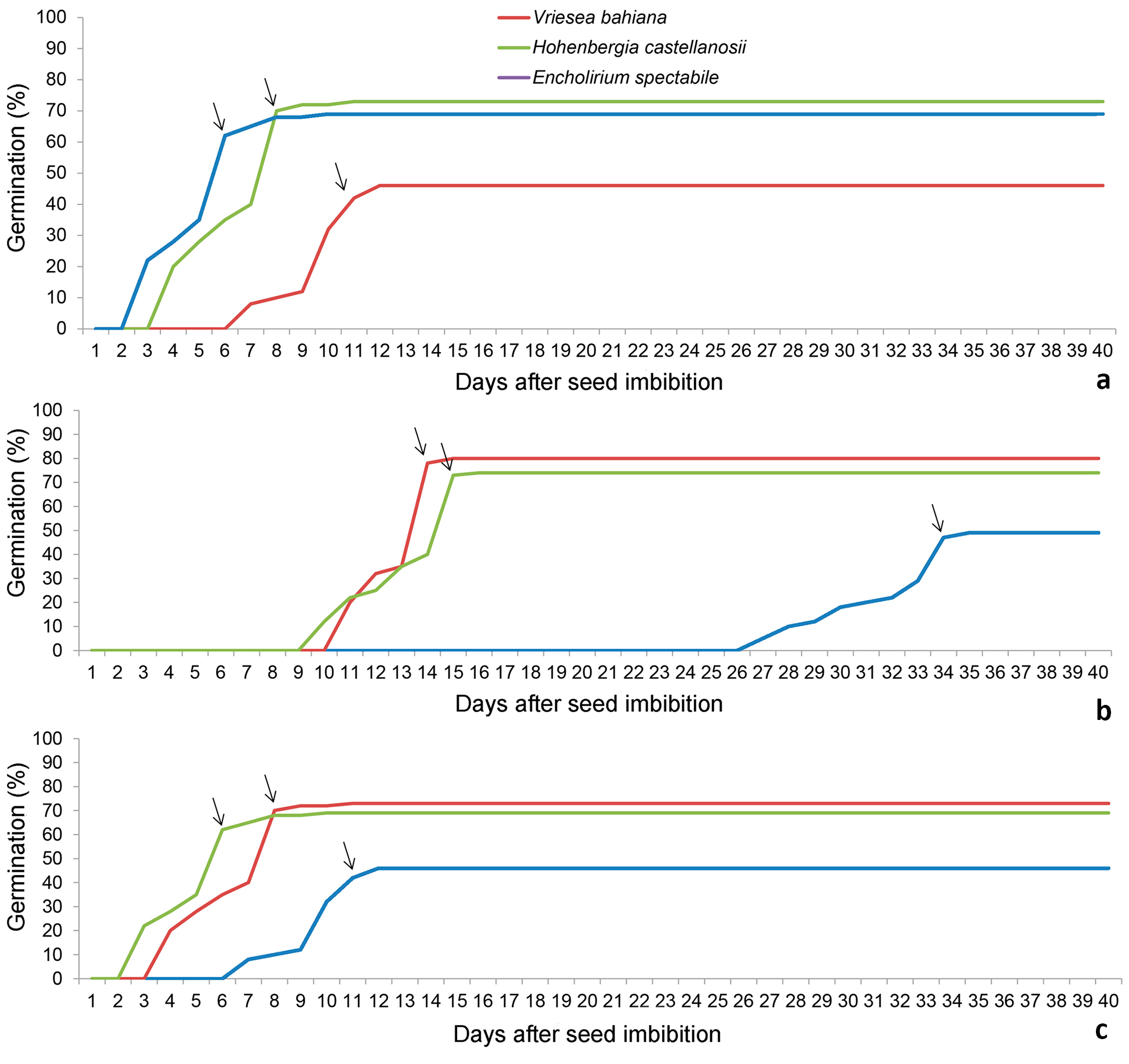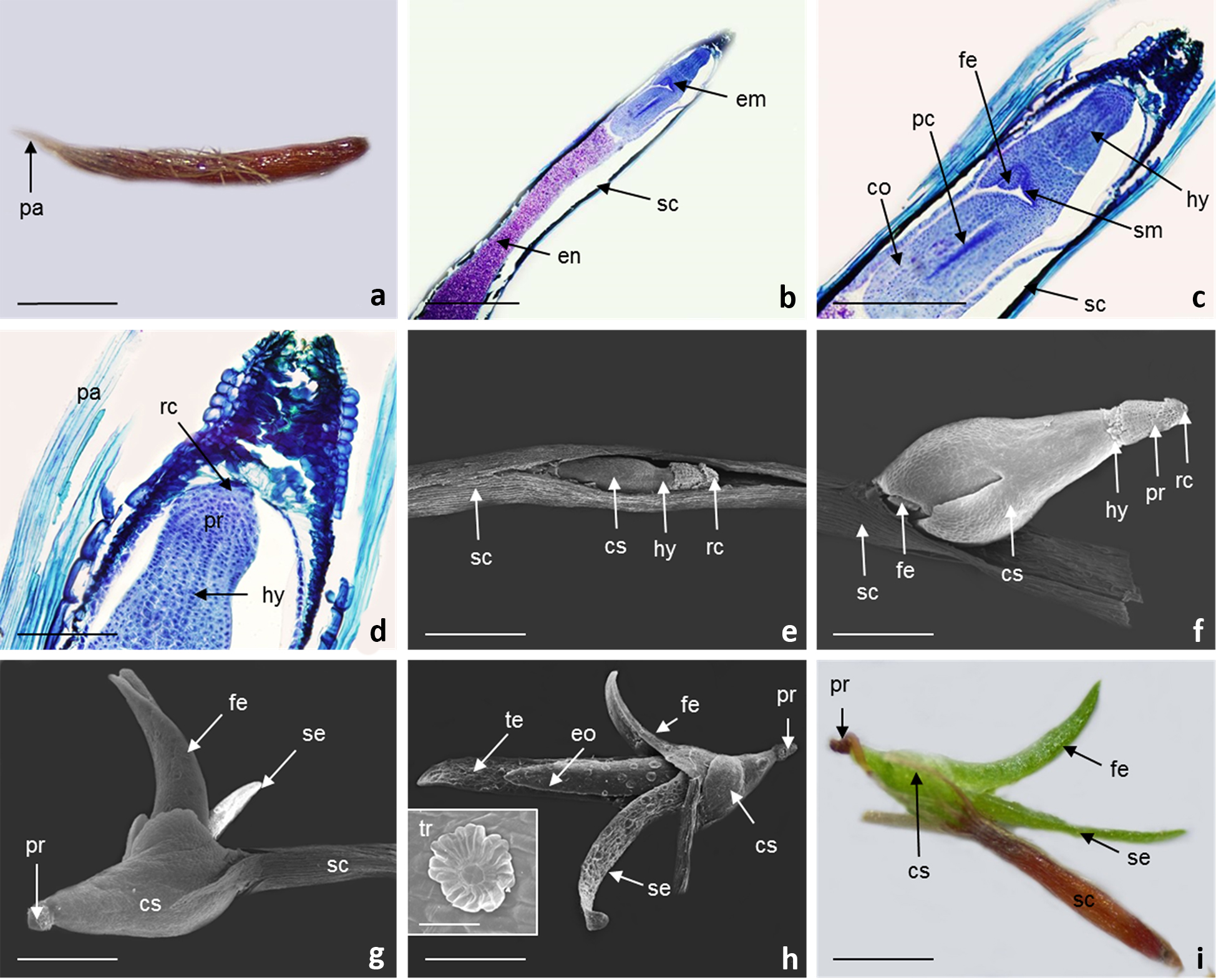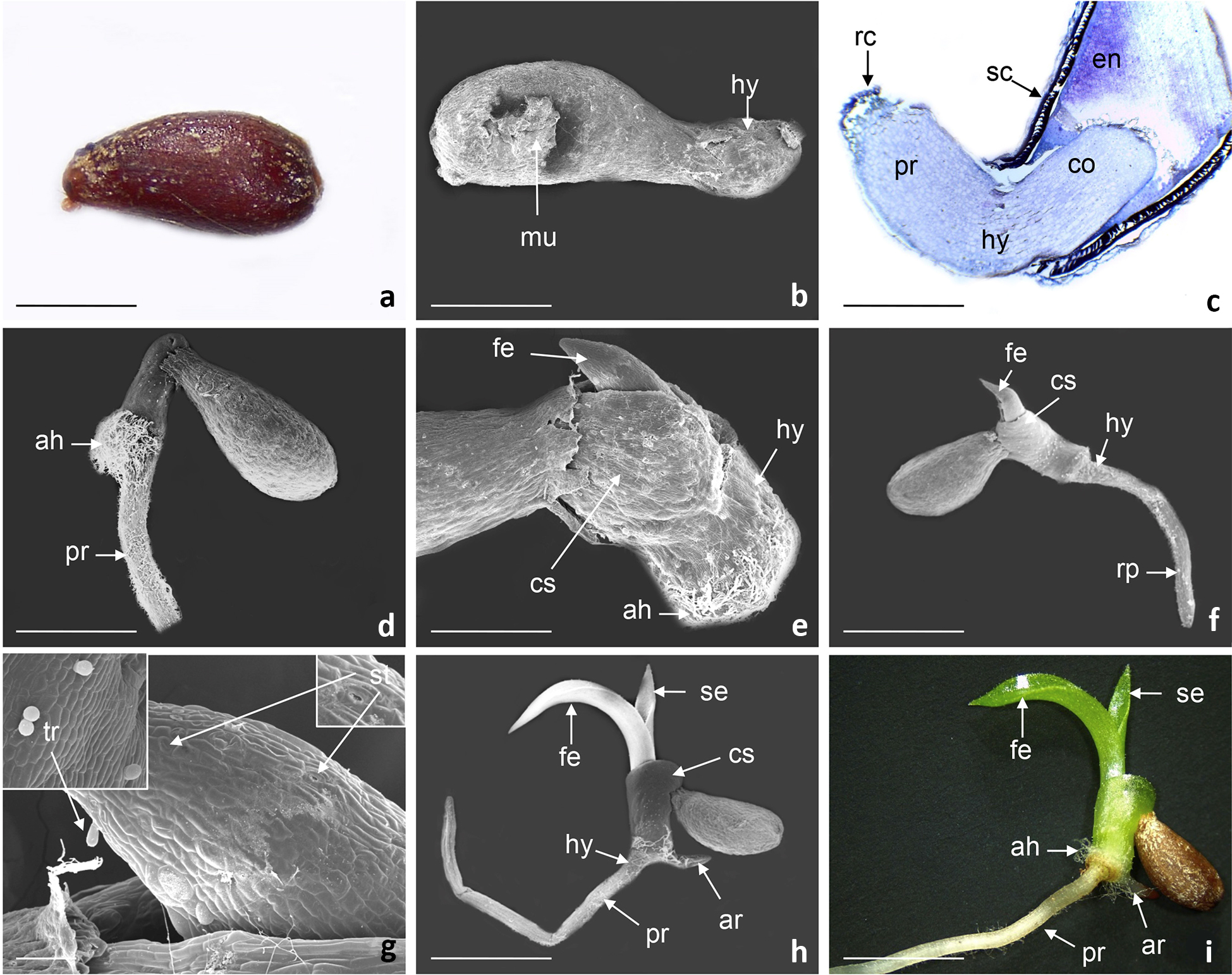Abstract
Vriesea bahiana, Hohenbergia castellanosii and Encholirium spectabile are endemic Brazilian species that are considered endemic or endangered. Development of strategies to conserve these species is important to prevent irreversible genetic erosion. The objective of this study was to evaluate the post-seminal development and seed cryopreservation of three endemic or in danger of extinction bromeliad species in Brazil, to obtain a protocol that can safeguard the genetic variability of these species. In the seed cryopreservation assay, we evaluated five desiccation periods. The seeds in the cryotubes were taken from the desiccator and immediately plunged into liquid nitrogen. For the analysis of post-seminal development, seeds in different germination stages were collected and evaluated by light and scanning electron microscopy. Vriesea bahiana seeds frozen in liquid nitrogen presented almost 100% germination, indicating dormancy break of this species. Vriesea bahiana can be cryopreserved with 5.9% water content after being dried for 24 hours. Hohenbergia castellanosii and E. spectabile seeds did not need to be desiccated before being cryopreserved. The most relevant morphological traits for differentiation of genera and subfamilies of Bromeliaceae are the shape and type of seed appendages. In this study, all three species presented well-differentiated size and shape of their structures.
Key words
Encholirium spectabile; Hohenbergia castellanosii; Vriesea bahiana; Bromeliaceae; Seed desiccation; Germplasm conservation

 Thumbnail
Thumbnail
 Thumbnail
Thumbnail
 Thumbnail
Thumbnail
 Thumbnail
Thumbnail



